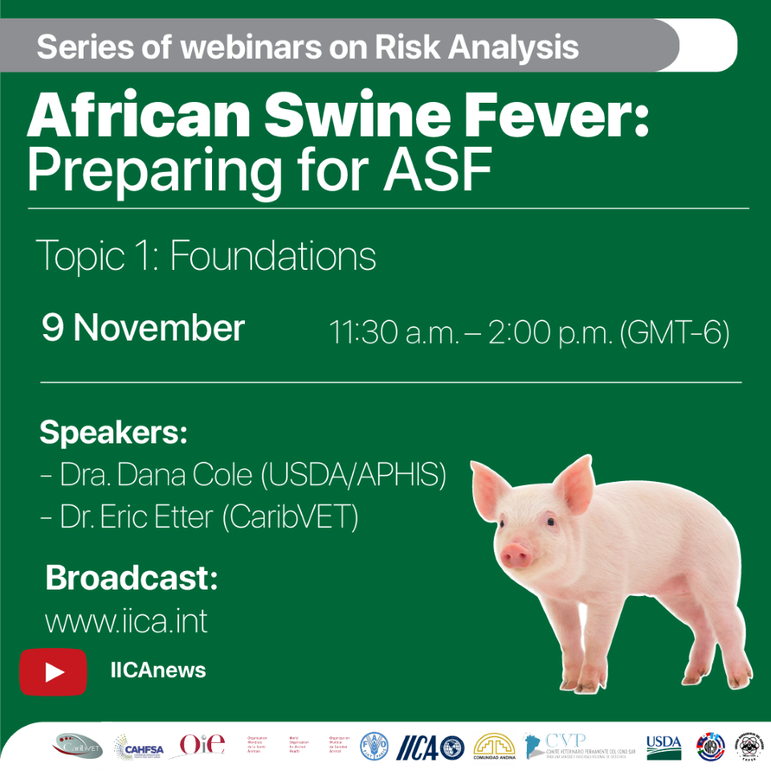
Webinar 1 of the risk analysis series. Determines the entrance pathways and risks of spread and establishment in host countries. The focus in this presentation is on risk assessment, considering the assessment of the entrance of the pathogen.
Dr. Dana Cole: USDA representative. Works for the epidemiology and animal health center of the US Department of Agriculture, animal and plant health inspection service in veterinary services. Currently associate director at the Epidemiology and Animal Health Center of the USA veterinary services. Supervises three units responsible for analytical activities, including geospatial and risk analysis, modelling of diseases and economic valuation. These efforts help veterinary services to determine political, commercial and international needs and to design disease prevention and control strategies for transboundary and domestic threats to animal health. Dr. Cole received her veterinary medicine qualification in 1993 from the University of California, Davis, and received a diploma in large animal internal medicine in 1997 from the American College of Internal Medicine. In 2002 she received her doctorate in epidemiology of veterinary medicine from the University of North Carolina from the Public Health School in Chapel Hill.
Eric Etter: Veterinary epidemiologist employed by CIRAD, currently secretary of CaribVET based in Guadalupe in the Caribbean. He has been named extraordinary professor in the Department of Production Animal Studies of the Faculty of Veterinary Sciences of the University of Pretoria, South Africa. Professor Etter is an internationally renowned risk analysis expert. He has published over 60 articles in international peer-reviewed journals and under his supervision or co-supervision 5 doctorate students and 15 Master’s students have graduated. Currently he is supervising and co-supervising 6 doctorate students and 2 Master’s students. His research has focused on different diseases, including vector-borne diseases such as bluetongue, Rift Valley fever, and zoonotic diseases such as brucellosis, and diseases with major economic consequences that affect both farmers and whole countries due to export bans. His role is to assess classical and innovative methods to determine risk factors in order to propose improvements and more profitable strategies to control these diseases. His research included social science approaches in the understanding of surveillance and control of mandatory declaration diseases.



